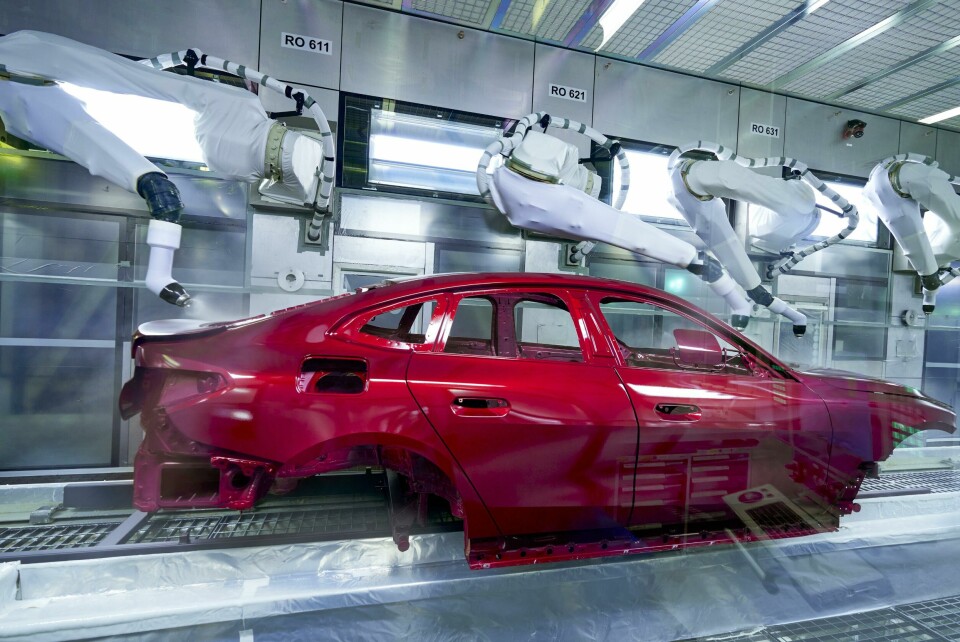AI data analytics for the paintshop
The presence of any airborne dust in a paintshop always presents a challenge to creating a high-quality paint finish. Effective filtration is the most basic way to prevent contamination but for BMW that is not enough. Mike Farish reports on how the OEM is using artificial intelligence (AI) and data analytics to develop better preventative measures

For BMW the principal aim has been to devise a methodology using real-time readings from sensors in the paintshop that can be evaluated against a database of potentially damaging factors to allow for immediate, proactive measures to be taken to ensure that paint quality is not compromised and to support longer term process improvement. A practical example cited by the company is that where dust levels are set to rise owing to the season or during prolonged dry periods, an AI algorithm might be able to detect this trend before it has harmful effects and be able to determine an earlier time for filter replacement.

That objective is confirmed by Peter Siemsen, head of the digital planning team for product and process planning topcoat finish with the company. “The main focus of this use case was to show the impact of dust particles in the paint booth on the final surface quality of the painted body,” he states. “Therefore, it was necessary to get data from the atmosphere within the paint booths. Detection of particle inclusions in the final paintwork has already taken place via automatic surface inspection (ASI) as a standard feature.”
“We use AI as a sub-theme of advanced analytics at countless points in the BMW production system”
The development work has been based on a pilot project in a paint shop at the BMW plant in Munich, southern Germany, that has been underway for a couple of years now. Siemsen explains that BMW decided to explore the potential of AI rather than more conventional computing in a paint quality assurance application because of its greater potential to deal with both the volume and complexity of the data involved. “In contrast to conventional IT, AI is capable of identifying cause-and-effect relationships out of big and highly complex data pools,” he confirms. “The ability to analyse and apply collected data from the past on a current situation is the key performance feature of AI. This property makes it technically and economically superior to standard programming or human monitoring.”
Due to the large number of process critical parameters, sprayable paint applications bear a high complexity. As such, Siemsen continues, “before you change one of them, you have to be sure about the real interactions to avoid trial and error mode.”
Pursuing continuous development
Siemsen says that the project was not initiated as the result of any specific incident relating to paint finish quality but instead from a company ethos that aims to exploit all opportunities to achieve process improvement. “The efficiency of our paint processes has been continuously improved to achieve today’s high level,” he states. “This process will never be finished and in the context of resource management and circular economy this spirit is increasingly important.”
But though the software element of the project is highly innovative the sensor technology involved is entirely conventional. The company states that data from sensors and surface inspections enables over 160 features relating to the car body to be monitored and that the quality of paint application can be predicted very accurately. “Standard sensors as well as specific detection systems such as our ASI are involved in our online process control approach,” Siemsen confirms. “The main task is to provide the data to the AI.”
Siemsen adds that the identification and analysis of detection patterns is regarded as more important than sheer detection speed because they support the enhanced decision-making capability that is project’s objective. “We have installed different sensor and detection systems to monitor the quality of our car body surfaces as well as our production equipment,” he states. “Learning about the impact of single parameters and features on the final paint result is an ongoing part of the AI approach.”

Developing wider application of AI
Interestingly Siemsen also says that though the company has filed several patent applications the patenting of particular capabilities “was not the major scope” of the project. Instead, he indicates that the company takes a broader view in which successful process improvement derives from “collaboration with external material and equipment suppliers.” As such the company regards AI as just another technology it can use to improve its processes. “We use AI as a sub-theme of advanced analytics at countless points in the BMW production system,” confirms Siemsen. “Machine learning and AI add considerable value both in the analysis of structured data such as sensor data and time series and in the evaluation of unstructured data such as images and videos.”
In fact, Siemsen continues, AI has already proven particularly effective in image processing where the company has already recorded “significant improvements” as a result of its deployment. “The robustness of such AI solutions is significantly higher compared to conventional computer vision or camera booths, since the hardware can be designed to be more lightweight and less expensive,” he states. “In consequence employees are able to create their own AI exactly for their specific use case. The BMW Group is committed to a human-centric approach when it comes to using AI.” In practice this involves, for instance, “the deliberate democratisation of AI algorithms as open-source software”.
Therefore, at an even broader level the Munich paintshop project represents just another instance of how the company views the utility of AI. “In concrete terms AI is used particularly in quality work to relieve employees of tedious, monotonous control activities with no added value for the customer,” explains Siemsen. “Many AI applications are live and being rolled out worldwide. Since complexity management is particularly important in assembly, this is currently the focus of the AI roll-out.”
As for paintshop applications Siemsen says that BMW is “deliberately investing in pre-development to enable AI systems with particularly low-cost camera hardware.”
In the specific case of the Munich project, he confirms that it has generated real practical returns. “We have learned a lot about dust and its effect on our paint process,” he states. “It has given us a lot of ideas for our continuous improvement process


